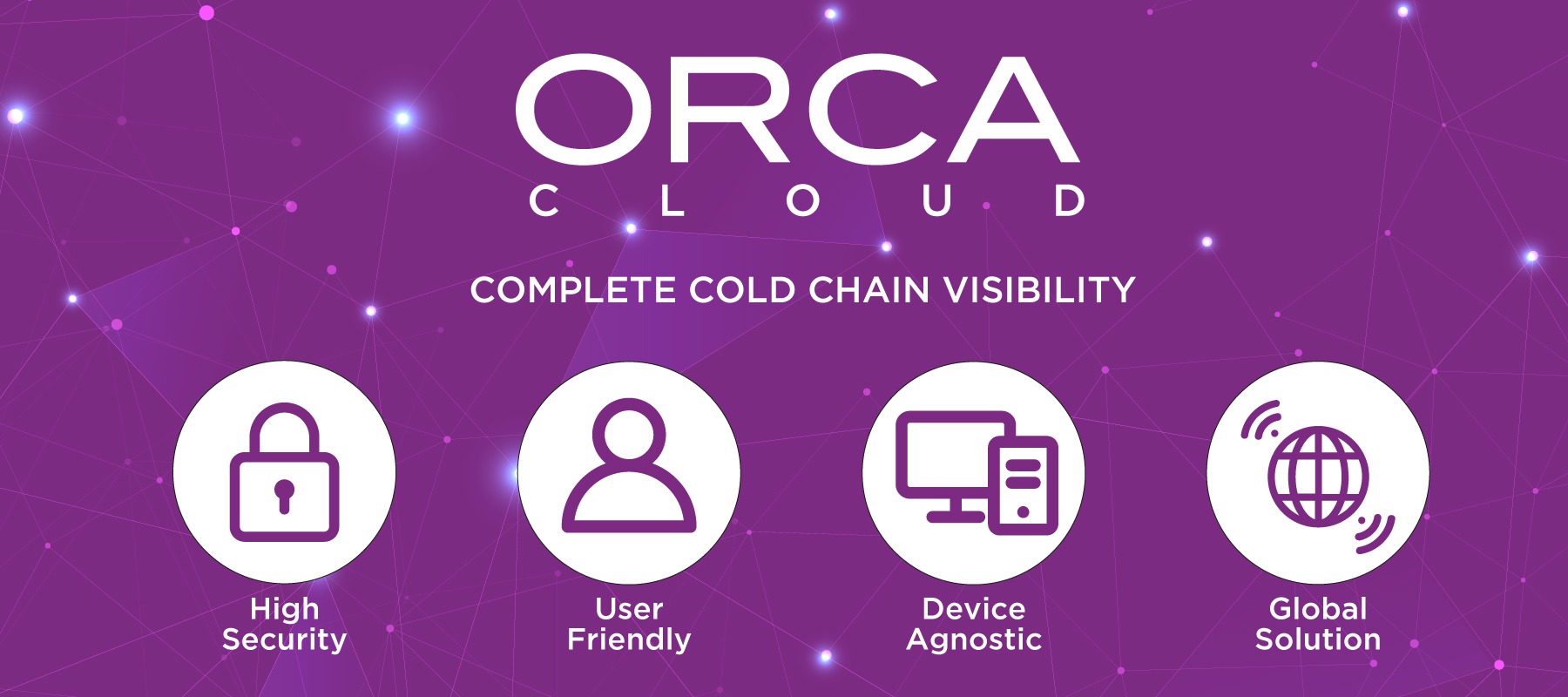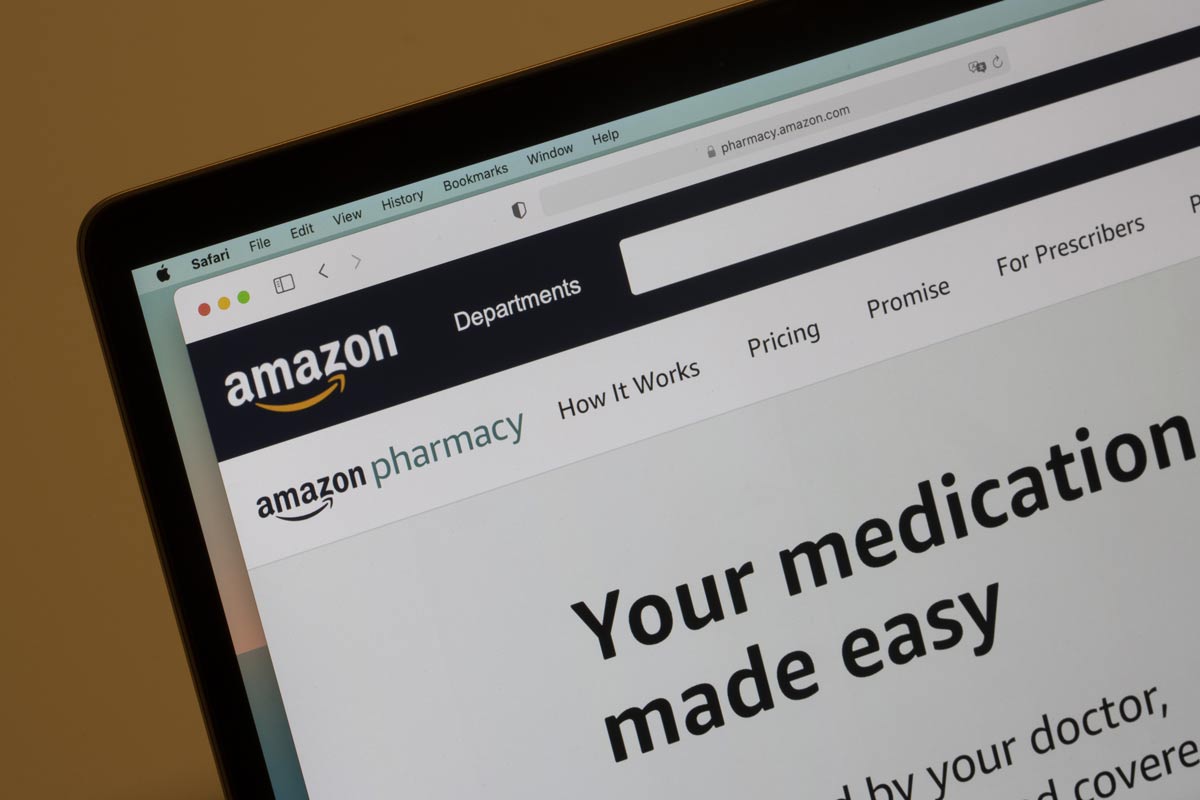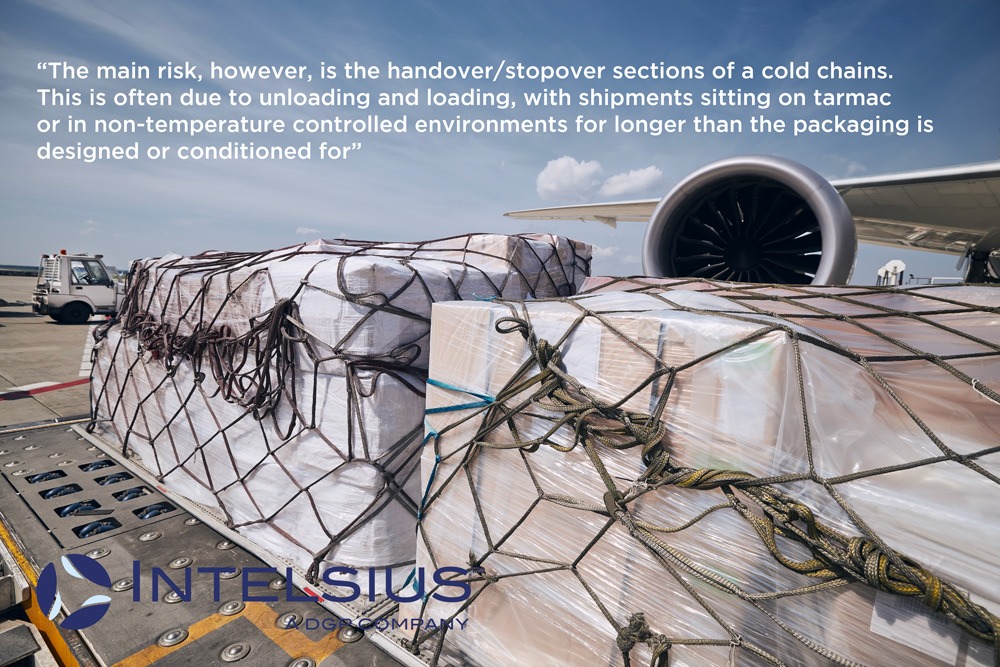
Every cold chain presents unique challenges, but in this Q&A with Intelsius Technical Director, Jens Mangelsen we’ve highlighted five common challenges of cold chain shipping and how best to overcome them, and what the future holds for cold chain.
At Intelsius, we’ve been helping pharmaceutical companies, and logistics providers navigate complex refrigerated supply chains with our temperature-controlled packaging solutions for over 20 years. Find out more about our range of temperature-controlled packaging here.
Jens, you’ve worked in supply chain logistics for over 20 years, in that time, what has changed about cold chain logistics? And, are there more or less risks now compared to 20 years ago?
Compared to 20 years ago, the number of temperature-critical pharmaceuticals has increased dramatically. The absolute majority of substances in development today are biological and therefore generally temperature-sensitive. In addition, the number of decentralised clinical trials and direct-to-patient delivery has also increased, posing a further challenge, especially in conjunction with the increased number of temperature-sensitive drugs.
Of course, logistics processes have improved considerably over the last 20 years. This also and especially applies to cold chain logistics. Not least since the introduction of GDP about 10 years ago, cold chain logistics has become much more robust, traceable and secure. Nevertheless, the number of temperature-critical shipments has increased significantly in the same period. This has also led to logistics service providers who did not offer cold chain logistics just a few years ago now also wanting to enter this lucrative and growing market. Taking all this into account, while certain risks have disappeared, the total number of temperature-critical shipments has increased dramatically and new risk factors have emerged.
All risks that can lead to loss or theft of the product and/or shipping data or allow counterfeit products to be placed on the market. Inadequate packaging, poor documentation, lack of know-how and/or lack of traceability are aspects that render valuable medicines unusable, endanger patients or significantly damage the reputation of manufacturers.
Risk 1: Cold Chain Weak Points
Why is this a risk?
Hub and spoke networks with many transhipments are more vulnerable than direct transports. Transfer points and multiple transport providers for partial routes are also a risk, as successful onward transport depends on multiple service providers. Add into this the fact that most logistic supply chains operate at night, unresolved queries often delay onward transport by 24 hours or more.
Cold chain logistics is often not a fully controlled temperature environment. For example, aircraft are only partially and limited temperature-controlled environments, but this is factored into the logistics planning and the packaging used. The main risk, however, is the handover/stopover sections of a cold chains. This is often due to unloading and loading, with shipments sitting on tarmac or in non-temperature controlled environments for longer than the packaging is designed or conditioned for. Further to this, as we see more and more extreme weather conditions due to climate change, the focus on how packaging is transferred between legs will intensify.
A separate issue is delays in customs clearance, which are a main reason for deviations and damage caused to temperature sensitive goods. Custom clearance usually takes place at the end of the cold chain, and thus the far more critical part of the transport. At the beginning of the transport, almost any packaging is efficient enough to compensate for extended periods outside a temperature-controlled environment. It is at the end that the difference becomes apparent, and the payload is at greater risk.
The import of pharmaceutical products often requires various permits and extensive documentation, the incompleteness of which can quickly lead to queries and delays, which in turn pose a risk to the goods.
How can you mitigate this risk?
The right combination of suitable and qualified packaging and a specialised transport service provider can significantly reduce the risks of cold chain weak points. The more susceptible the chosen transport route or service provider is to delays or unknown environmental conditions, or has a lack of know-how, the better the packaging must be, and vice versa. Logistics with temperature-controlled storage, e.g. at airports, can reduce stress on temperature-controlled shipments and extend the duration of passive packaging or even recharge it, reducing the risk of temperature excursions, especially towards the end of transport.
In general, using cold chain specialist logistic providers will always reduce risk, as they will have a great deal of experience in where these weak points occur, and how to mitigate them on the ground. So, do your research, understand the terrain you’re shipping through, and ensure you’re partnering with the right logistics providers before shipping.
In relation to customs clearances, be clear about what is required when shipping into certain countries, paperwork, licences etc. all take time to process, and understanding what is involved from the outset will help you avoid such issues. As mentioned above, using expert cold chain logistics providers will help overcome many of these challenges, as they have processes baked into their service to limit these delays.
Risk 2: Delayed Information
Why is this a risk?
A 2020 survey of 200 pharma manufacturers and distributors showed that roughly 90% didn’t have full visibility into their supply chains and didn’t trust the in-transit data they were receiving.
The usability or analysability (e.g. samples) of sensitive goods or materials depends on compliance with defined transport conditions. Missing or delayed information can lead to unusable goods or faulty results and replacement is expensive and, in many cases, not possible at all. Download of data can take time, and sometimes happen long after the product was delivered, especially when staff are busy with all the other daily tasks. Paperwork delays can delay treatment, which ultimately puts patients at risk.
Manual data collection and transmission to the relevant stakeholders can delay the data evaluation and thus the release of goods, and the decentralised storage of relevant temperature data poses a significant risk to traceability and long-term data availability.
How can you mitigate this risk?
Close transport and payload monitoring with automated reporting can ensure delivery on key data as and when it’s needed. Monitoring transport milestones in transit (arrival at defined gateways) using a combination of automated tracking and control tower services keeps you across all key data.
At Intelsius we offer ORCA Cloud, a remote cloud-based data monitoring service that enables multiple users to log in and view key data from anywhere in the world, without handling data loggers, or needing to train staff. Data is displayed in a simple manner, across all important data fields, and can be accessed using secure personalised log ins for multiple stakeholders.
We are proud to partner with many data logger experts, and have created specialist connected temperature-controlled packaging (ORCA Connect and ORCA Single Use) that connects ORCA Cloud for complete oversight of your temperature and time sensitive payloads throughput their journey.
Essentially, being able to access data on demand and without delay is key, and partnering with a packaging expert and logistics provider than can deliver that will be the difference between costly delays and delivering essential healthcare to customers when they need it.
Find out more about logger integration and ORCA Cloud here.
Risk 3: Security
Why is this a risk?
Product theft and counterfeiting is a big issue for the pharmaceutical supply chain. As pharmaceutical products become more specialised, and the price increases, security has become a focus for cold chain logistics providers around the world.
Counterfeit products are finding their way into the market, and unsuspecting distributors and wholesalers, unable to differentiate, are mistakenly purchasing these products instead of the real thing.
This presents not only a financial and reputational risk, but a very real risk to patients who are exposed to fake products.
For example, the DEA (Drug Enforcement Administration) issued a safety alert on a “sharp Increase of fake prescription pills containing fentanyl and methamphetamine“. The DEA warned “that international and domestic criminal drug networks are flooding the united states with lethal counterfeit pills”.
Theft is also a legitimate concern for cold chain logistics providers, as the black market for prescription drugs is worth several 100 billion USD and continues to grow.
How can you mitigate this risk?
With both counterfeit products and theft, proper tracking of products from legitimate producers to the customer is essential if you want to secure your cold chain from start to finish. It also requires proper due diligence at each stage of the purchasing and distribution process.
As mentioned previously, you can now easily track your products throughout their journey using onboard data loggers and cloud access, with automatic alerts based on real-time geofencing and other shipment and packaging surveillance technologies. This allows you to quickly identify unusual activity or suspicious transport routes.
Risk 4: Cold Chain Infrastructure in the Developing World
Why is this a risk?
The distribution of vaccines during the COVID-19 pandemic highlighted a number of issues with the global cold chain, not least the fact that many developing nations are not as prepared to receive and transport temperature-sensitive products as developed nations.
Ports and airports often have less capacity and smaller or lack of on-site temperature-controlled facilities. There is also often limited knowledge on the ground, which can lead to serious errors leading to spoiled shipments, theft, or lost packaging. Governance is often less established, which can lead to long wait times as products are left to sit on tarmac, or in storage depots.
Beyond major transport hubs, the issue of delivering vaccines, medicines and other temperature-sensitive payloads to hard-to-reach rural areas in developing nations is a serious problem. Roads are often poorly maintained, and in many places not passable for many larger delivery vehicles.
Extreme weather conditions, small mistakes can lead to serious consequences, not least essential products not reaching the patient intact, or at all. And, due to the high-value nature of many pharmaceutical products, theft becomes a major issue not just from criminal gangs, but from people who see a unique opportunity to cash in on their unique access to the cold chain.
How can you mitigate this risk?
Improving infrastructure, governance, and personnel training takes time and money. Investment into developing world cold chain infrastructure is essential if we are going to better meet the demands of future healthcare crisis.
Partnering with experts in cold chain shipping is always advisable, especially when shipping into less well established cold chain networks in developing nations. Monitoring your cold chain becomes more important than ever. Access to remote data monitoring platforms such as ORCA Cloud give you an extra sense of security when it comes to onboard temperature and the ultimate efficacy of the product. As well as temperature, humidity, shock and other data fields, monitoring when and where your packaging was opened and closed can also provide that added peace of mind that you and your customer may need when shipping into less established cold chains.
Risk 5: Human Error
Why is this a risk?
All of the risks we’ve discussed can in some way be mitigated by better training. As more and more pressure is put on global cold chains, the higher the stakes become for those responsible for delivering safe and secure logistics networks and cold chain processes.
How can you mitigate this risk?
While training and investment in infrastructure are key, a move to more automated processes and the deployment of technology such as ORCA Cloud will ultimately reduce risk from human error in cold chain logistics.
My top tips for avoiding unnecessary errors are to always work with experts in cold chain logistics, plan affectively for whatever challenges you might encounter, and implement a form of tracking that gives you key data. Data will ultimately help you spot problems and eradicate them from your cold chain faster.
What challenges do you see developing in future?
The majority of cold chain supply chains are B2B. They involve large wholesalers and pharmaceutical companies selling to governments and private healthcare providers around the world. A major change that we’re already seeing, but which is destined to become industry standard over the next decade is personalised medicines and B2C supply chains.
 Essentially, we’re talking about personalised medicines delivered to your door, or ‘on demand’. We see this shift in how we shop in almost every other sector, and we’re already seeing this shift in healthcare. In a recent Intelsius article we touched on Amazon’s $753 million purchase of PillPack in 2018, which lead to the creation of Amazon Pharmacy. This will soon become industry standard, with more and more home delivery companies investing in healthcare delivery.
Essentially, we’re talking about personalised medicines delivered to your door, or ‘on demand’. We see this shift in how we shop in almost every other sector, and we’re already seeing this shift in healthcare. In a recent Intelsius article we touched on Amazon’s $753 million purchase of PillPack in 2018, which lead to the creation of Amazon Pharmacy. This will soon become industry standard, with more and more home delivery companies investing in healthcare delivery.
We have seen this shift impact how clinical trials are operated, too, with many now conducted with participants staying at home throughout the trial. Drugs are shipped out to them, and their regular samples are collected at home by the participant, and then shipped direct to the lab.
In order to deliver this on the scale we’ll eventually see huge requires investment in last mile cold chains, better integrated logistics networks enabling millions of customer deliveries to a patient’s front door.
Processes, tools, packaging, logistics, monitoring in order to ensure security and efficacy will all be required to ensure these localised supply chains are safe, temperature-controlled where needed, and that staff are trained to handle human samples and high-value medicines requiring a great deal of handling care.
You can read our in-depth article into the growth of B2C medical supply chains here.
Get in Touch
If you have questions about the risks involved in cold chain logistics, or would like to discuss our range of temperature-controlled packaging solutions and services, get in touch at compliance@intelsius.com.

